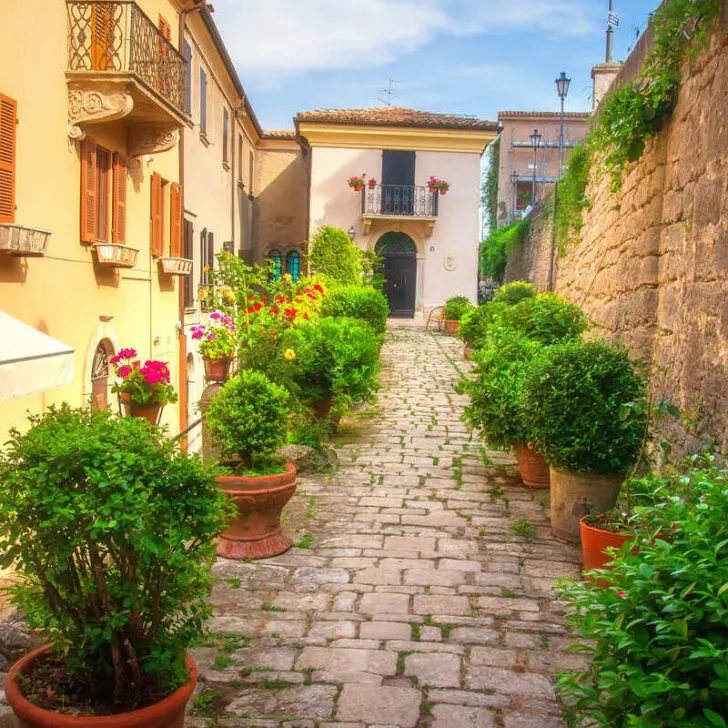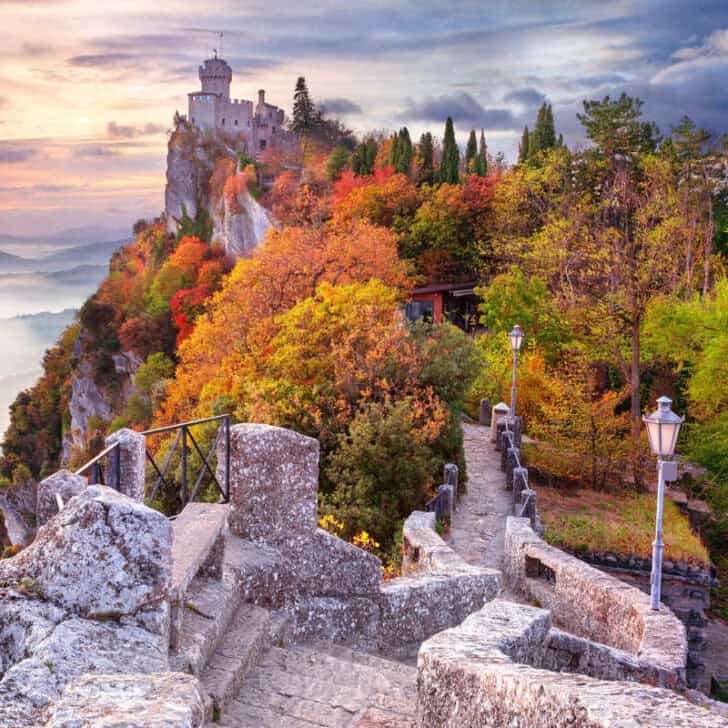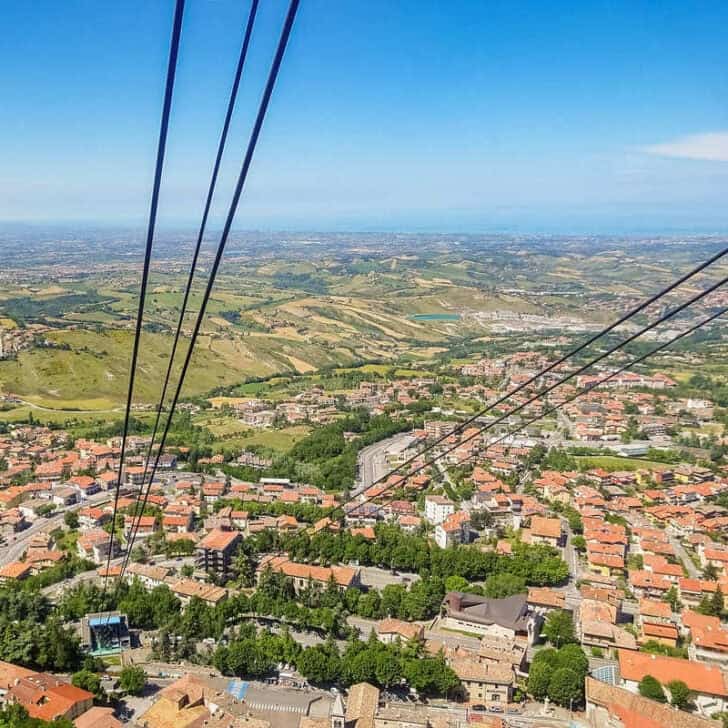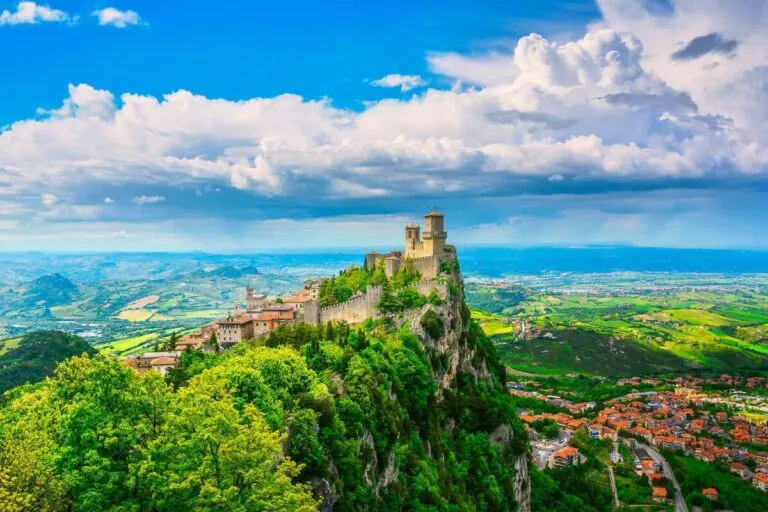Whether you’re a History buff or just moderately interested in geography, it probably wouldn’t blow your mind if we were to tell you there is an independent country inside Italy: we’ve all heard of the Vatican, seat of the Holy See, and the world’s tiniest sovereign state.
However, unless you’ve been studying the map of the Italian Peninsula for a while, you might not have noticed the Vatican is not the only country trapped within Italy’s national borders––yep, there is a second one, except it’s miles away from Rome and its religious pilgrims.
Occupying a hill in the north of Italy, San Marino is the fifth-smallest country in the world and a world-class fall destination at that (especially if you’re looking to beat the crowds):
What Makes San Marino Special?
We get you may be puzzled at the thought there is yet another country in the middle of Italy, so here are some fun facts about San Marino before we can proceed:
- It is the oldest country in the world, having remained virtually unchanged for 17 centuries
- It’s the oldest constitutional republic in Europe
- The official language is Italian
- The currency in use is the euro, like in neighboring Italy
- The republic itself is completely surrounded by the Italian region of Emilia-Romagna
- The country’s size is 61.2 square miles, one-third of the size of Washington D.C.
- The tallest peak, Monte Titano, rises 2,457 feet above sea level
- The population is of only 33,660 people, as per the latest count

Now that you know San Marino is probably smaller than the sprawling suburb you live in, and it’s essentially a castle on a hill, why even entertain the idea of visiting?
Of course we’re joking: shall we reiterate it’s not only a fully-fledged country, but a fairytale castle on a hill?
The Country That Could Belong In A Disney Princess Movie
At the highest point of San Marino, near Monte Titano, you’ll find the idyllic City of San Marino, a citadel serving as the capital and administrative center of the micro-state.

It may hold city status, but it is really a compact town with 4,061 residents, characterized by largely car-free, cobbled alleyways, medieval dwellings, and flanked by three imposing towered peaks, the most famous of which is Guaita:
Built as far back as the 11th-century, this watchtower is the most easily-recognized postcard in San Marino, etched on a vertiginous cliff overlooking Italy’s verdant North.
It is accompanied by Cesta, the most advantageous viewpoint in both the capital and country as a whole, as well as a national museum displaying a rich collection of medieval weaponry, and the least-visited Montale, not currently open to the public.

Why Fall Is The Perfect Time To Visit San Marino
With its hilly nature, high altitude, and absence of rivers and sea to cool down from the suffocating heat, San Marino is not somewhere you want to visit in the peak of summer when thermometers can hit a scalding 90 degrees.
It is much better to ascend San Marino in the fall, when the average daily temperature is a far more pleasant 68 degrees, dropping to a breezy 54 in the evenings, and the unforgiving sun––and the inhospitable humidity––aren’t slowing you down.
Again, everywhere you go in San Marino is an upward lane, and sources of water are limited, if not non-existent: even in the off-season, keep a water bottle on you, and bring a couple of snack bars before you set out to summit the peaks.

How Affordable Is San Marino To Visit?
San Marino is also considerably more affordable as a destination in the fall, with 3-star hotels starting from only $83 and a meal at an inexpensive restaurant costing as cheap as $16.76, according to Numbeo estimates.
Top cheap eats include Strapizzati, a local-owned pizzeria a short 4-minute walk from Palazzo Pubblico della Repubblica, in the capital, where you can get square slices of pizza to go for under $5, and Bar Ristorante Marico, where ordering a pasta dish and some will set you back by $17.
What To See Beyond The Capital?
Outside the capital, tourists visit Dogana, the main entry point into the country, where you can get souvenirs at cheaper rates, and dine inexpensively––just look for the restaurant-lined Via della Repubblica.
Borgo Maggiore, host to San Marino’s largest open market, is also not to be missed.
If you can’t get enough of the medieval flair yet, the historic town of Serravalle houses both a landmark castle and charming piazzas that are largely crowd-free this fall.

Only 300,000 International Tourists Every Year
In fact, San Marino as a whole remains largely undiscovered by a majority of tourists flying to Italy from across the pond: an approximated 85% of the 2 million annual visitors to the country are Italian nationals.
Considering Italians are effectively still ‘at home’ in San Marino––there are no borders, language barriers, nor currency exchanges––only 300,000 actual foreigners make it to the country every year despite its accessibility:
It’s only a 50-minute bus ride from the up-and-coming Adriatic resort city of Rimini, except this October, it will feel much more peaceful.
Credit: Source link

